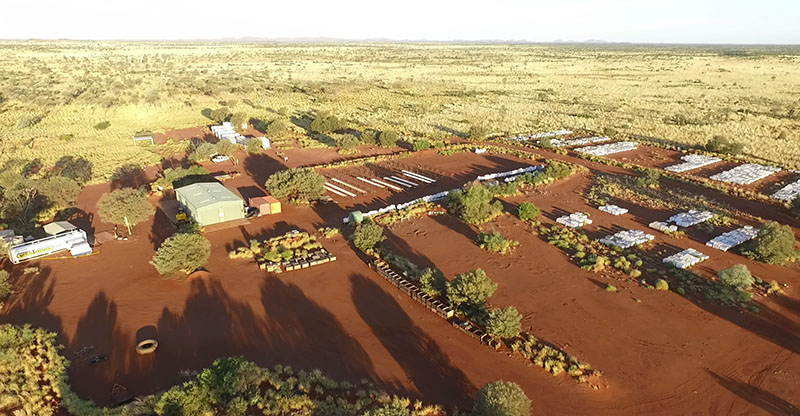Copper miner Oz Minerals burgeoning West Musgrave Project is advancing rapidly toward reality near the intersection of borders between Western Australia, South Australia, and the Northern Territory. Back in August 2019, the miner announced that it was considering a 55 MW hybrid diesel-solar-wind solution to power this project.
This week, Oz Minerals has announced that it is committed to developing a roadmap to 100% renewable generation through an off-grid renewable power solution which the miner believes will become “one of the largest fully off-grid, renewable powered mines in the world.”
Despite qualifying that a gas pipeline remains an option for the project, the miner said in a statement that a hybrid fossil fuel-solar-wind-battery solution as a nominal 50 MW base case power supply is being proposed.
“Modelling has demonstrated that circa 70 to 80% renewables penetration can be achieved for the site,” the statement said, “with the current mix assumed to be an optimised mix of wind, solar and fossil fuel supported by a battery installation. There remains considerable upside in power cost through matching plant power demand with the availability of renewable supply (load scheduling), haulage electrification to take advantage of curtailed energy and the continued improvement in the efficiency of renewable energy solutions.”
For at least the next few decades, mining is going to fuel the energy transition, and renewables like solar are, in turn, going to fuel mining. According to the “State of Play: Electrification” report – recently released by Virtual Consulting International and sponsored by the Future Battery Industries Cooperative Research Centre – 89% of the world’s leading mining executives expect mine sites around the globe to electrify within the next two decades. And 61% of the mining industry respondents said they believe the first and most important step in the process of electrification is the development of renewable energy generation capacity.
If Oz Minerals does go ahead with its currently plan, the solution could avoid more than 220,000 tpa of CO2 emissions that would otherwise be produced by a fully diesel-powered operation.
One of the biggest obstacles to solar uptake in mining sites is the incompatibility of a short-life mine with a long-term investment like a solar plant. This obstacle has been recently hurdled thanks to advancements in modular solar. However, Oz Minerals needn’t negotiate this hurdle since its Pre-Feasibility Study (PFS) demonstrated an approximate 26-year mine lie via open pit mining methods. Of course, 26-years is within the upper limit of a solar plant’s lifespan.
Oz Minerals is predicting that its Build-Own-Operate-Maintain (BOOM) 50 MW hybrid renewable power supply will require CAPEX of around $275 million, a figure not inclusive of an expected Power Purchase Agreement (PPA).
Oz Minerals is now embarking on the next phase of its site studies as well as regulatory approvals, with a possible EPA period kicking off in mid-2022.
At the Energy and Mines World Congress in Toronto, Canada, in December 2019, companies presented a number of new developments for onsite renewable energy applications at remote mining sites. This strongly contributed to the sense that 2019 was a tipping point for renewable-energy integration throughout the mining sector. A year on, that sense looks to have been pretty accurate, despite the Covid-19 pandemic. The West Musgrave Project may indeed develop the world’s largest off-grid renewable energy mining solution, but now that the tipping point has been reached, the record of largest off-grid renewable mining solution is likely one that will continually tumble.
This content is protected by copyright and may not be reused. If you want to cooperate with us and would like to reuse some of our content, please contact: editors@pv-magazine.com.









1 comment
By submitting this form you agree to pv magazine using your data for the purposes of publishing your comment.
Your personal data will only be disclosed or otherwise transmitted to third parties for the purposes of spam filtering or if this is necessary for technical maintenance of the website. Any other transfer to third parties will not take place unless this is justified on the basis of applicable data protection regulations or if pv magazine is legally obliged to do so.
You may revoke this consent at any time with effect for the future, in which case your personal data will be deleted immediately. Otherwise, your data will be deleted if pv magazine has processed your request or the purpose of data storage is fulfilled.
Further information on data privacy can be found in our Data Protection Policy.